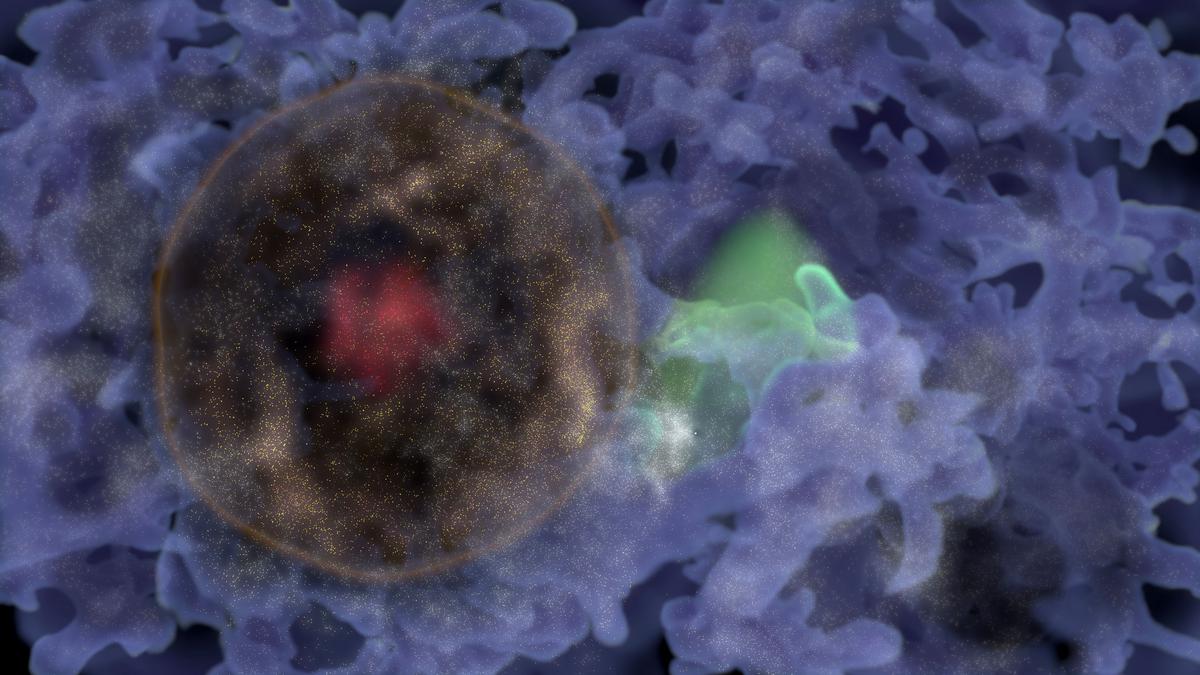
Science This Week | Scientists discover ‘bubble of galaxies’, bird-like dinosaur found in China and more Premium
The Hindu
Check out The Hindu’s science wrap featuring top 7 stories on new discoveries, findings, and studies in the scientific world from this week.
From finding the ‘bubble of galaxies’ to physicists finally being able to ‘see’ inside short-lived nuclei, find all the latest news, discoveries and findings that happened in the field of science this week.
Astronomers have discovered the first "bubble of galaxies," an almost unimaginably huge cosmic structure thought to be a fossilised remnant from just after the Big Bang sitting in our galactic backyard. The bubble spans a billion light years, making it 10,000 times wider than the Milky Way galaxy. Yet this giant bubble, which cannot be seen by the naked eye, is a relatively close 820 million light years away from our home galaxy, in what astronomers call the nearby universe.
Researchers said they have observed a supermassive black hole at the center of a relatively nearby galaxy as it takes bites out of a star similar in size and composition to our sun, consuming material equal to about three times Earth's mass each time the star makes a close pass on its elongated oval-shaped orbit. Black holes are extraordinarily dense objects with gravity so strong that not even light can escape. The star is located about 520 million light years from our solar system. A light year is the distance light travels in a year, 5.9 trillion miles (9.5 trillion km). It was observed being plundered by a supermassive black hole at the heart of a spiral-shaped galaxy.
Researchers in the RIKEN Nishina Center for Accelerator-Based Science in Japan have taken a big leap forward – by demonstrating a set-up that can use electron scattering to ‘see’ inside unstable nuclei, including those that don’t occur naturally. The experiment uses an apparatus to hold the nuclei of caesium-137 atoms as well as make sure electrons can interact with them, using a system called SCRIT. Through this experiment, physicists have successfully tested that the set-up can probe the nuclear structure of short-lived atomic nuclei using electron scattering. In other words, the physicists have demonstrated a femtoscope. Just as a light microscope can probe things that are around a micrometre in size, a femtoscope is a machine that can probe the femtometer scale (10-15 m) of atomic nuclei.
An elusive particle proposed in 1956 by theoretical physicist David Pines has just been discovered by a team of scientists led by Peter Abbamonte of the University of Illinois. Scientists long suspected that this particle, called a ‘demon’, plays a fundamental role in the characteristics of several metals, but have been unable to confirm its existence thus far. The demon is not a particle in the conventional sense of the term. Pines, the physicist, found that if a solid has electrons in more than one energy band – i.e. if the electrons occupied more than one energy level – their individual plasmons could interact to form a new and massless composite particle, the demon.
Scientists have developed human embryo-like structures without using sperm, an egg or fertilisation, offering hope for research on miscarriage and birth defects but also raising fresh ethical concerns. The researchers, led by Palestinian scientist Jacob Hanna at the Weizmann Institute in Israel, harnessed the power of embryonic stem cells, which can become any kind of cell. The researchers say their work differs from those of other teams because it uses chemically rather than genetically modified embryonic stem cells and produces models more like real human embryos, complete with yolk sac and amniotic cavity.
Global numbers indicate that there are around 7,000 rare diseases affecting 300 million people. By extrapolation, India should have 70 million cases. Yet hospitals in India have so far reported less than 500 of these diseases. There is not enough epidemiological data on the communities in which these rare diseases occur. Sophisticated clinical genomics tools are often needed to confirm these disorders. The Government’s National Policy for Treatment of Rare Diseases has only recently started making its mark. Diseases prevailing in our countries include cystic fibrosis, haemophilia, lysosomal storage disorders, sickle-cell anemia, etc.

Under the Ganitha Kalika Andolana (GKA) initiative, a maths learning movement supported by the Government of Karnataka, In 2024-25, the Gram Panchayat level Maths Contests were conducted across 28 districts in Karnataka. Around 5,95,517 children from 26,188 schools in 4,890 Gram Panchayats were assessed in about 30 days to address the gaps in numeracy levels of children studying in government schools.

Controversies surrounding BIFFes did not affect the festival’s spirit, as people beat the scorching heat to watch films from different parts of the world. As is the trend every year, senior citizens and college-goers attended the festival in the majority as BIFFes witnessed a slight increase in footfall this year, compared with the previous edition. During the closing ceremony of the 16th edition of BIFFes, organisers, led by Karnataka Chalanachitra Academy chairman Sadhu Kokila, gleefully mentioned the massive turnout on the final day.











